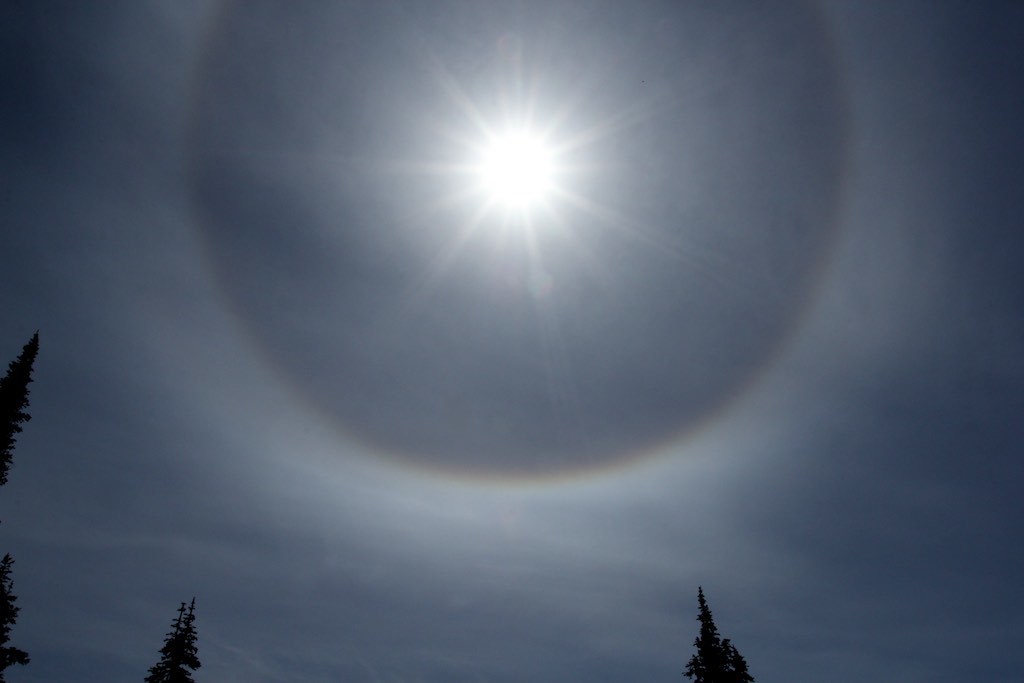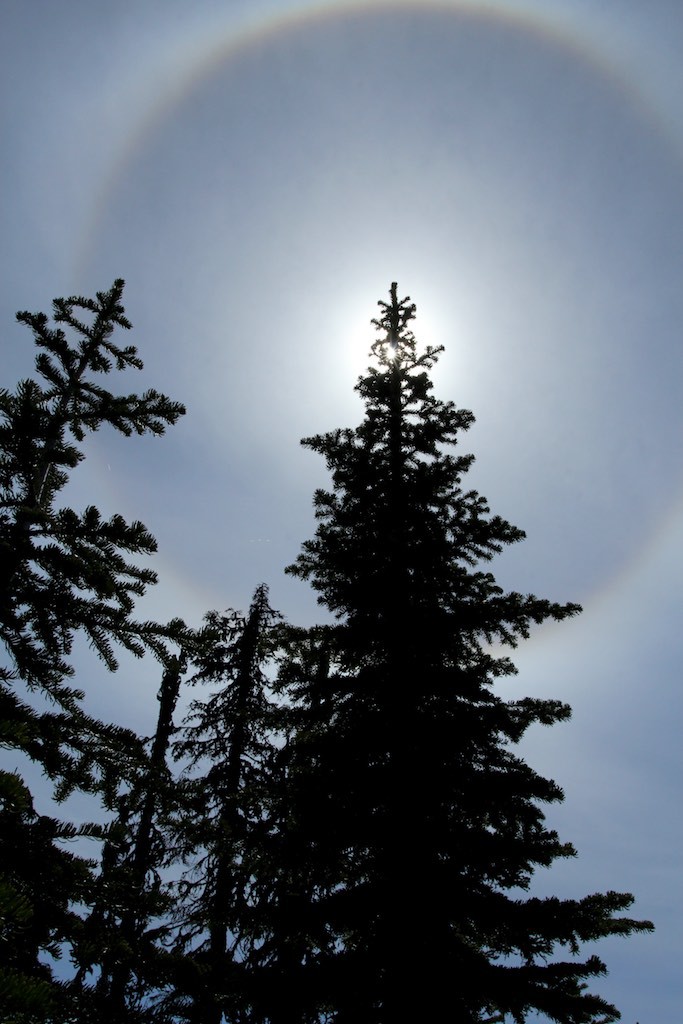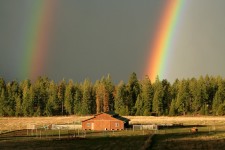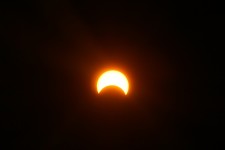On a hike over Memorial Day weekend I happened to look skyward and see a colorful ring around the sun. The ring didn’t last long enough for me to reach the ridgeline above the trees. The rainbow-colored circle turned out to be a sun halo, more specifically a 22 degree halo.
Like rainbows, sun halos are unique to the observer because they depend on light refracting through an object and entering the eye of the observer. Each observer sees light being refracted from different objects or different angles from the same object.
In terms of rainbows, the object is raindrops. For sun halos, the object is ice crystals.
The hexagonal-shaped ice crystals exist year-round high in the atmosphere and are usually associated with cirrus clouds (the thin wispy clouds). The ice crystals are two shapes: plates or columns. The hexagonal plates are flat, six-sided wafers like crackers while the hexagonal columns are like six-sided pencils. Both have eight surfaces to refract light.
Refraction is when light enters an object (like an ice crystal) and bends whereas reflection is when light bounces off the surface of an object.
When sunlight refracts through hexagonal ice crystals, it bends twice–once upon entering the crystal and then upon leaving. The refracted light leaves the ice crystal 22 degrees from its original direction which produces a ring of light observed at 22 degrees from the sun. Light can also refract and leave at 46 degrees resulting in a less common 46 degree halo.
A halo can also be seen around the moon but the phenomena is more rare because the moon has to be full or almost full.
Another atmospheric phenomena seen independently or in conjunction with sun halos are sun dogs. These bright spots tinged with color to the left and right of the sun are also called mock suns or parhelia. Sun dogs are at the same altitude as the sun and can be on the edge of a sun halo.
While sun halos are caused by light refracting through randomly orientated ice crystals, sun dogs are caused by light refracting through ice crystals orientated with their flat faces horizontal. Another difference is the size–halos are caused by ice crystals less than 20.5 micrometers while ice crystals for sun dogs are larger than 30 micrometers.
Sometimes sun dogs can have a flaring white tail leading away from the sun. This flare is caused by sunlight reflecting off the vertical sides of the plate-type hexagonal ice crystals.
When sunlight refracts through ice crystals for both sun halos and sun dogs, the common angle of refraction is approximately 22 degrees. However, the angle is slighter greater for blue light and slightly less for red light resulting in red being on the sunward side and blue being on the outside of the halo or sun dog.
Sun dogs are more common in northern latitudes but they can be seen year-round if ice crystals are present in the troposphere (lower portion of atmosphere where weather occurs).
The old saying of “a ring around the moon means rain soon” is valid because cirrus clouds typically mean a storm is nearby. Likewise, a sun halo can forecast rain or snow within 24 to 48 hours in moist regions which I now believe since the morning after the hike it rained.







Thanks a lot for sharing!
This actually answered my downside, thanks right here on this post. I will likely be coming again to your weblog for extra soon.
Thank you!! I had barely heard of them. Sharon Cousins of Latah County, ID says it’s likely she saw one this morning.